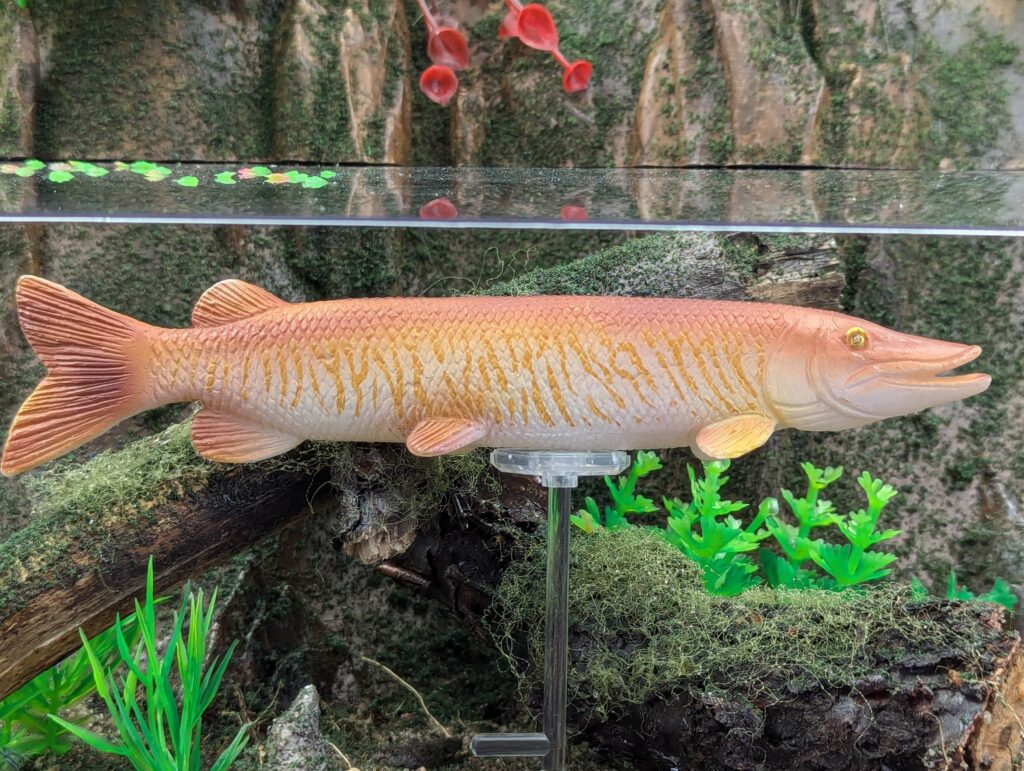
And another six inch figure from Replica Toy Fish. This time it’s a hybrid species, the tiger muskellunge or tiger muskie, Esox lucius x masquinongy or Esox masquinongy x lucius (it depends on on which the male is, indicated first). The tiger muskie, as indicated by the species name, is a hybrid animal animal with northern pike and muskellunge parents, and are usually sterile. This hybrid can occur naturally, where northern pike and muskellunge, but most of them are bred in hatcheries, usually male pike to female muskellunge. Their use for stocking in areas where they could be found is advantageous as ‘hybrid vigor’ seems to let them grow larger and faster, reaching stocking and trophy size faster. The same so-called vigor also seems to make them less susceptible to disease, and to be more tolerant of warmer waters.
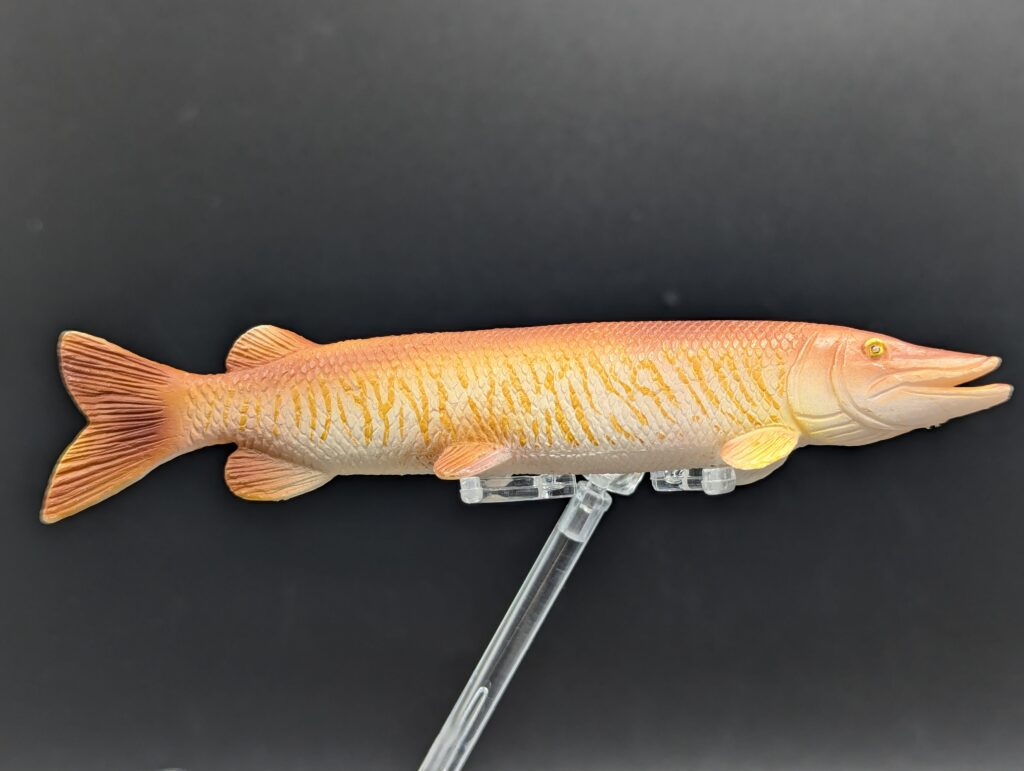
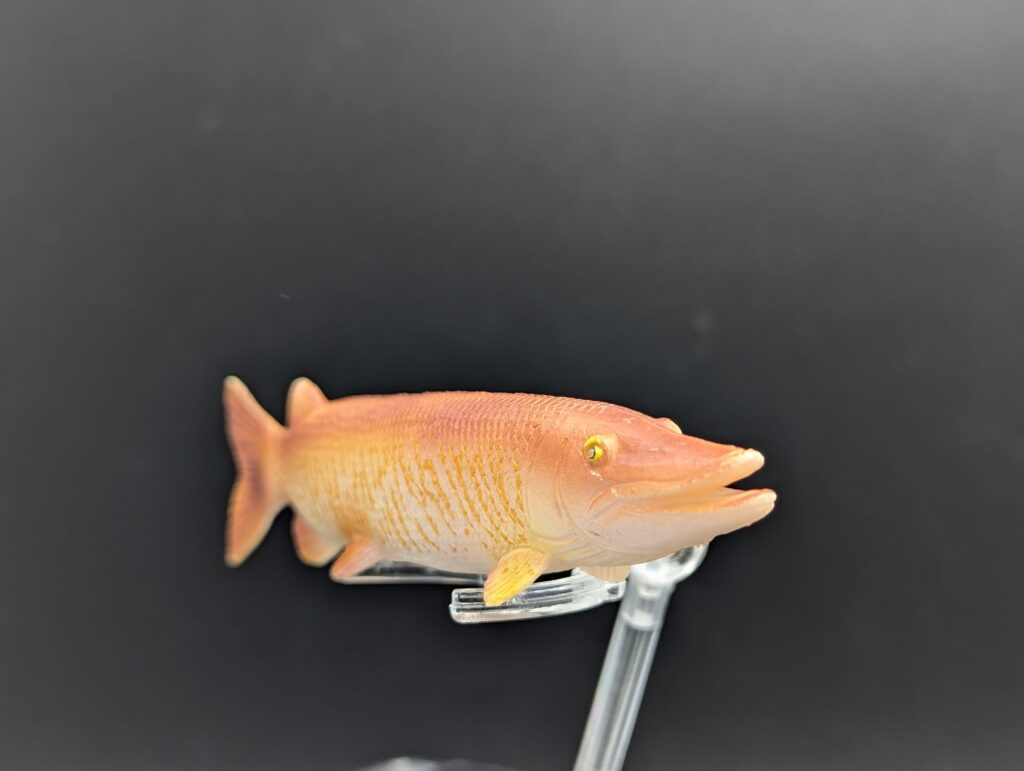
Tiger muskie are naturally found in northeastern freshwaters of North America, where both northern pike and muskellunge overlap. This includes quieter waters of southern Canada around the Great Lakes, and the upper Mississippi valley and the Ohio, and St Lawrence rivers. There is the potential to find them in any state or province in that range, but seem to be most common in Michigan. They are also stocked in many other states for anglers where both parent species do not occur, and that temperature tolerance means that they are found further southwest than either of those parents. They are strictly freshwater and seem to prefer shallower water.
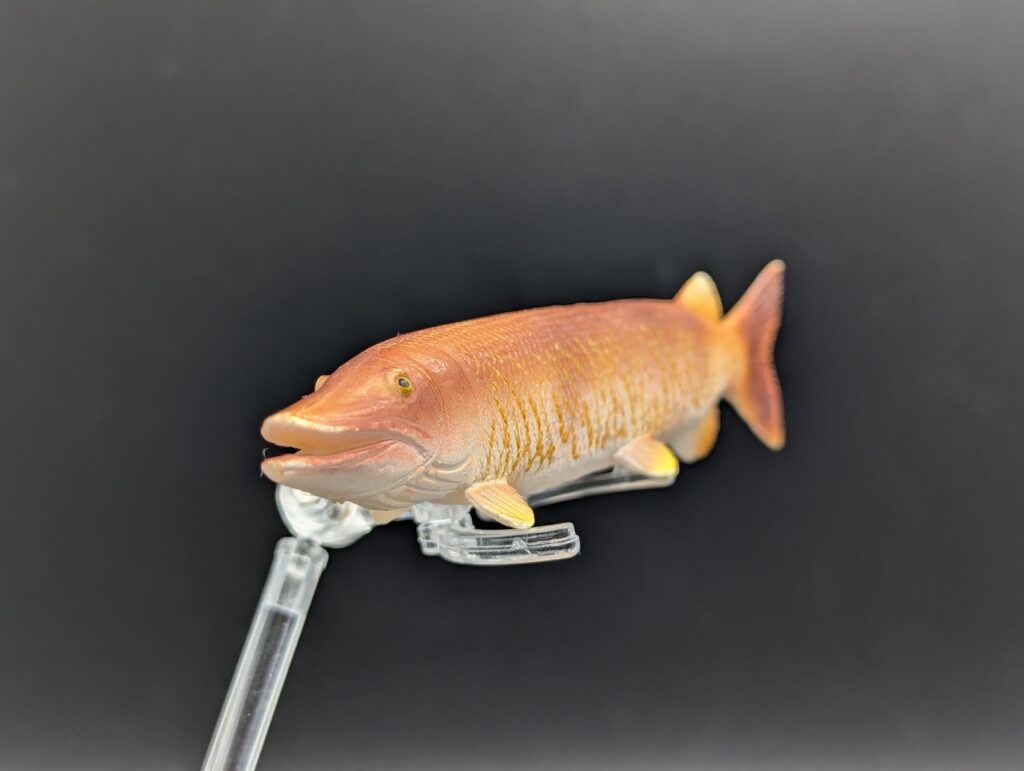
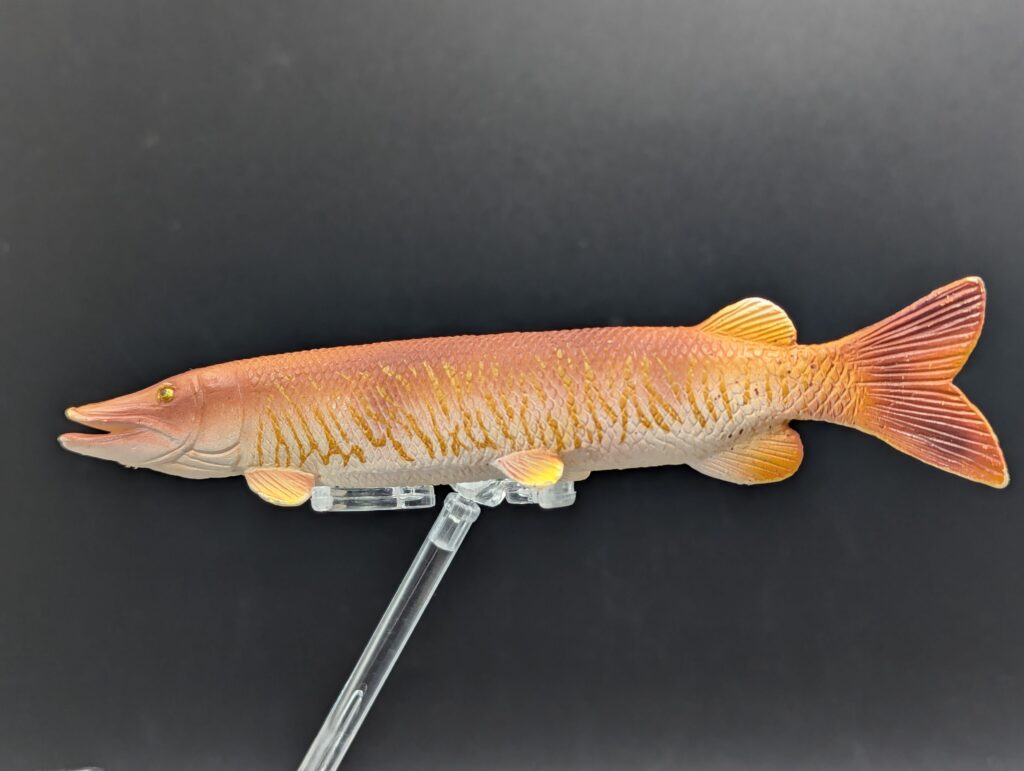
In terms of behaviour, tiger muskier are similar to the parents. Tiger muskie look kind of like both northern pike and muskellunge, with a similar large tubular body and pointed snout. The mouth does vary though, with a slight upturn to the mouth, giving a ‘duckbill’ appearance. The tail is also kind of in between–more rounded than a muskellunge, but more pointed than a northern pike. And like the parents they are ambush hunters that lurk in vegetation and burst out to capture prey. And that prey, like with pike, primarily focusing on a wide variety of fish, but in conditions with fewer fish they’ll take any other animal that comes along. And they can be very big fish, often reaching 130cm (50cm). This size and strength makes them popular targets for anglers, but like the parent species muskellunge, they are considered a very difficult fish to actually catch; the two are referred to as ‘fish of 10000 casts’.
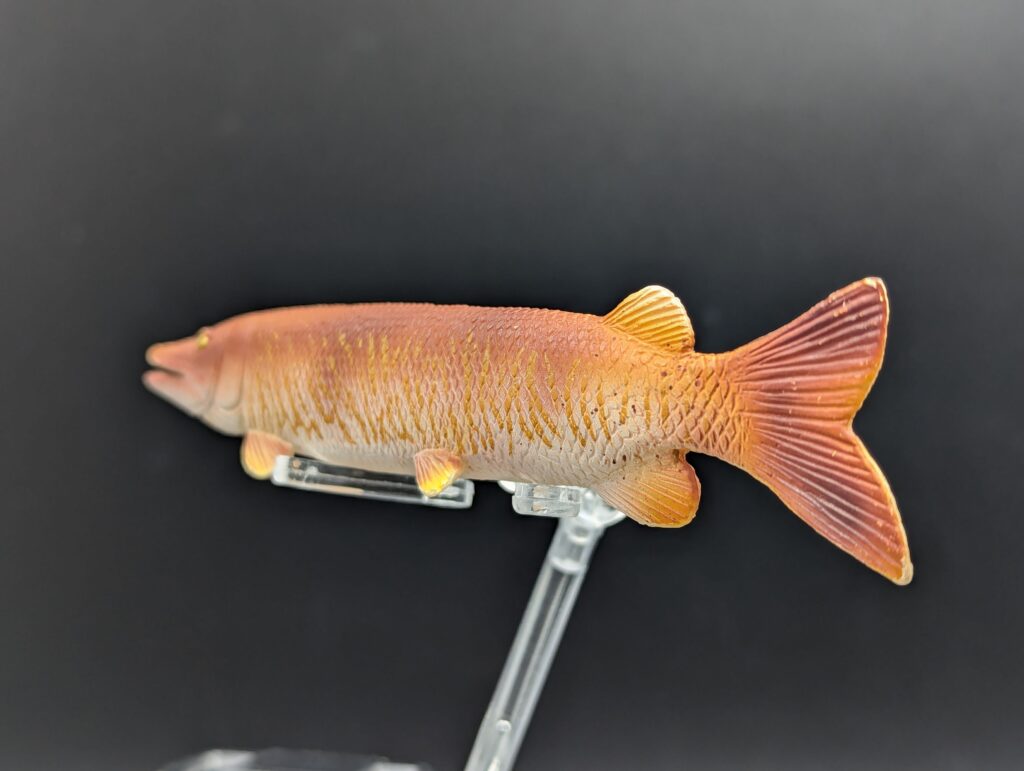
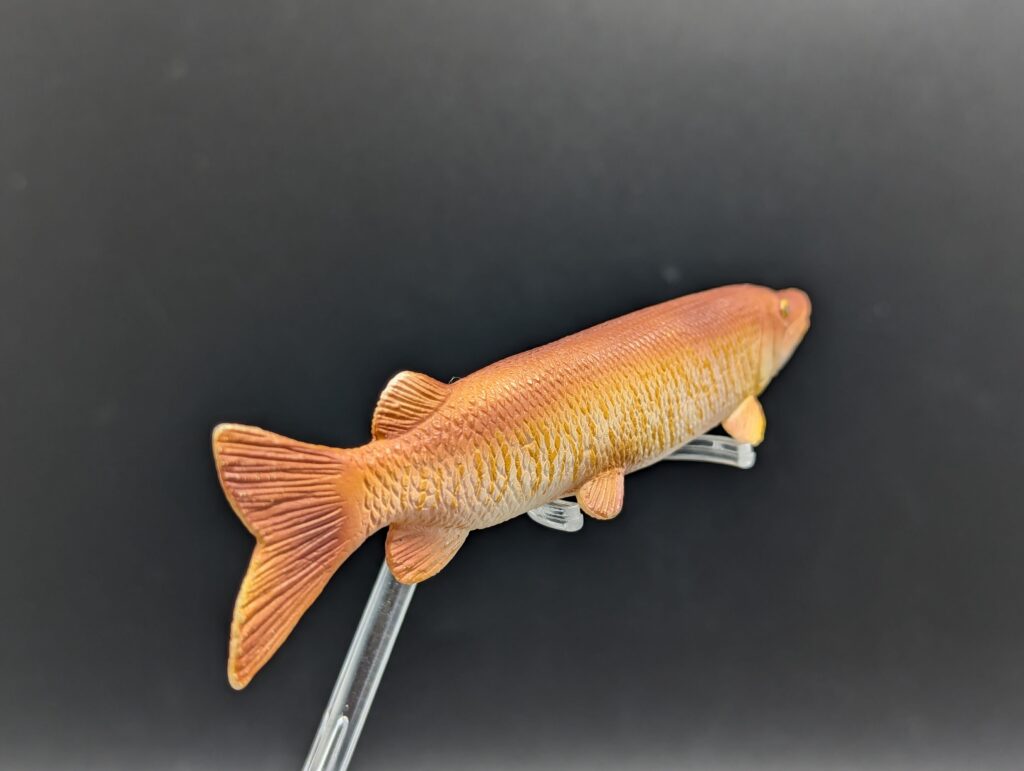
The figure itself is quite robust, heftier than the previously discussed six-inch northern pike. It is 14 cm (5.5 inches) long, so the scale would be around 1:9 scale. The overall sculpt is similar in design with a long pointed face, a thick tubular body, and a rapid narrowing at the peduncle into a tail with two even lobes that have a rounded inner edge and straight outer edge. One thing that immediately stands out–this is the only figure with a mouth that is actually open, but there is no detail such as teeth within. The lower jaw protrudes out past the upper jaw, and indeed has an upward curve giving that duckbill face. The face is overall smooth except for the lips around the margin of the mouth and the two large eyes protruding above the top of the head. The opercula show a couple of ridges, and on the throat are several rays. The paired fins are fairly small and rounded (should be pointed…), and the dorsal and anal fins are positioned far back on the body, as they should be–they are also much smaller than on the northern pike, and slightly more squared. The entire body is covered with fine, rounded scales, and all fins have rays sculpted into them.
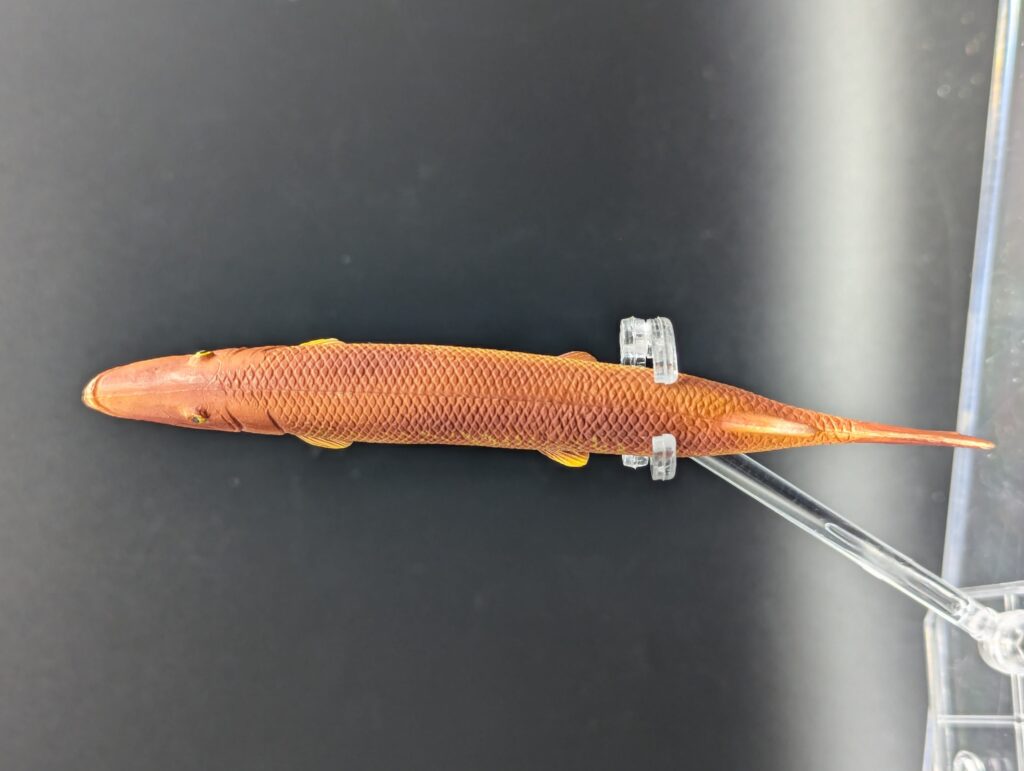
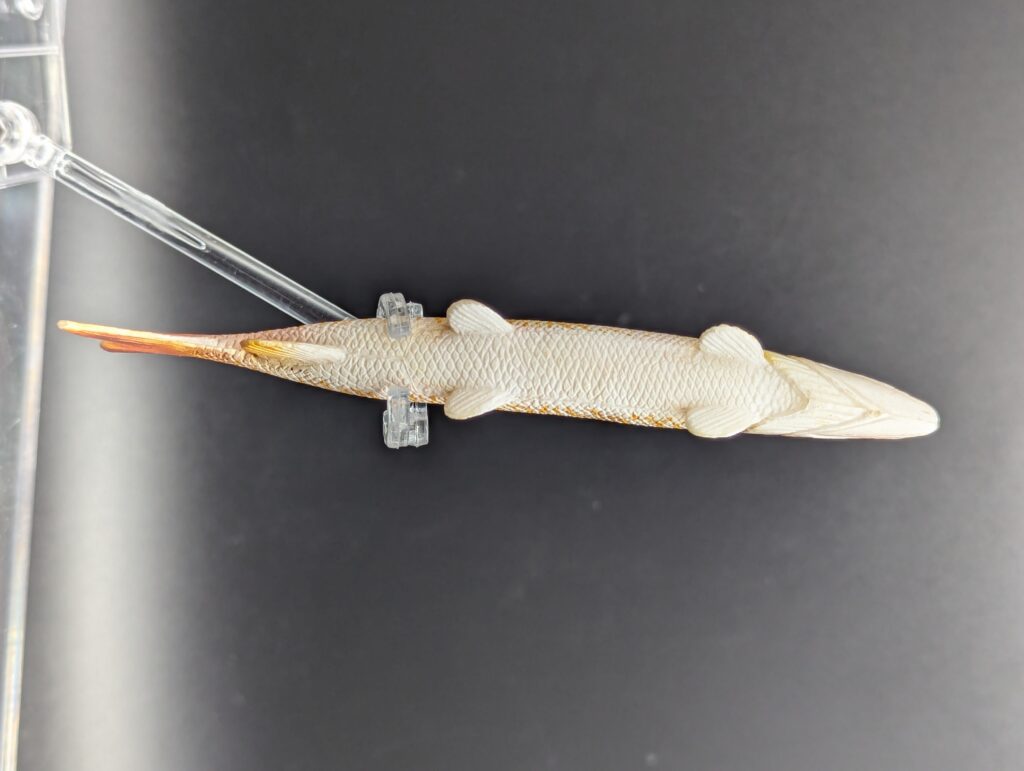
In terms of colour, the overall pattern is a reddish brown over much of the upper body and head, to about the midline, below which the same colour extends into random stripes…almost tiger stripe shaped. The outer surfaces of the body fins are at least partially covered in the same colour, while the tail is a darker brown. The underside, including the throat in inner paired fins, are just white. It’s hard to completely say if this is accurate as the hybrid tiger muskie can be even more variable than either parent species. It’s at least notably different from the northern pike figure, but should have more, thinner striping throughout, and usually have the opposite pattern of northern pikes, with the dark markings over the lighter body colour (as opposed to the pattern captured in the six inch pike figure–dark colour with white markings). It’s pretty good, and given the subject matter, would be tricky to get right! Overall a great figure, and there is nothing else like it. The robust model and distinct colouring probably made it a favorite toy for lots of kids.
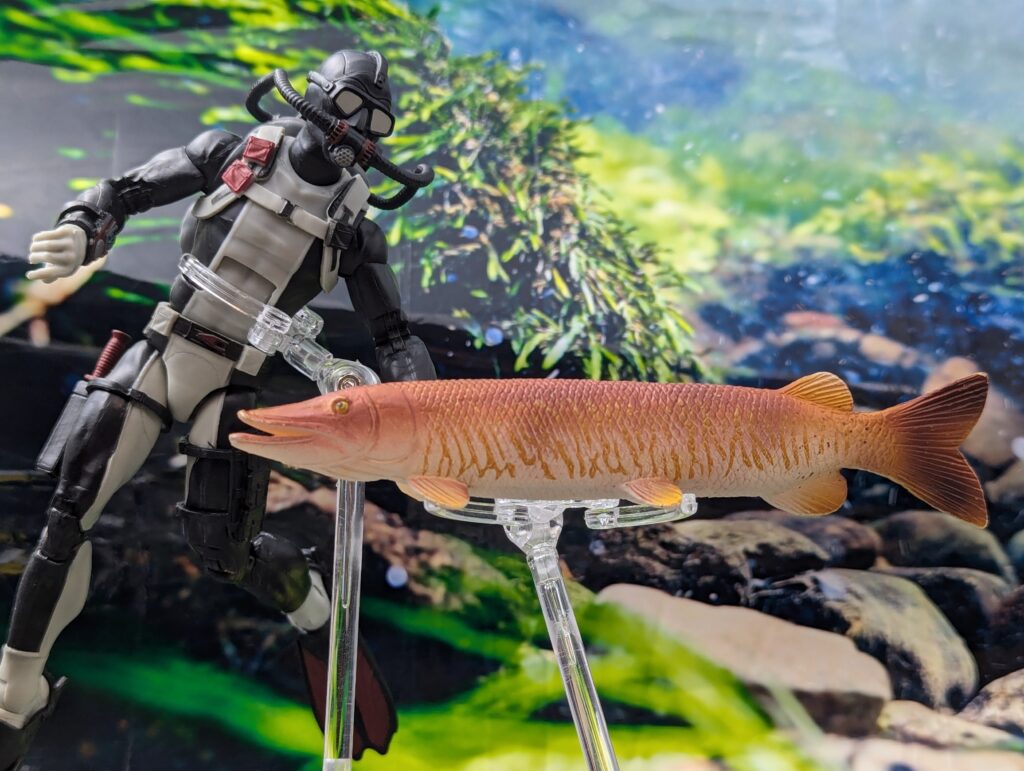
Disclaimer: links to Ebay and Amazon on the AnimalToyBlog are affiliate links, so we make a small commission if you use them. Thanks for supporting us!



